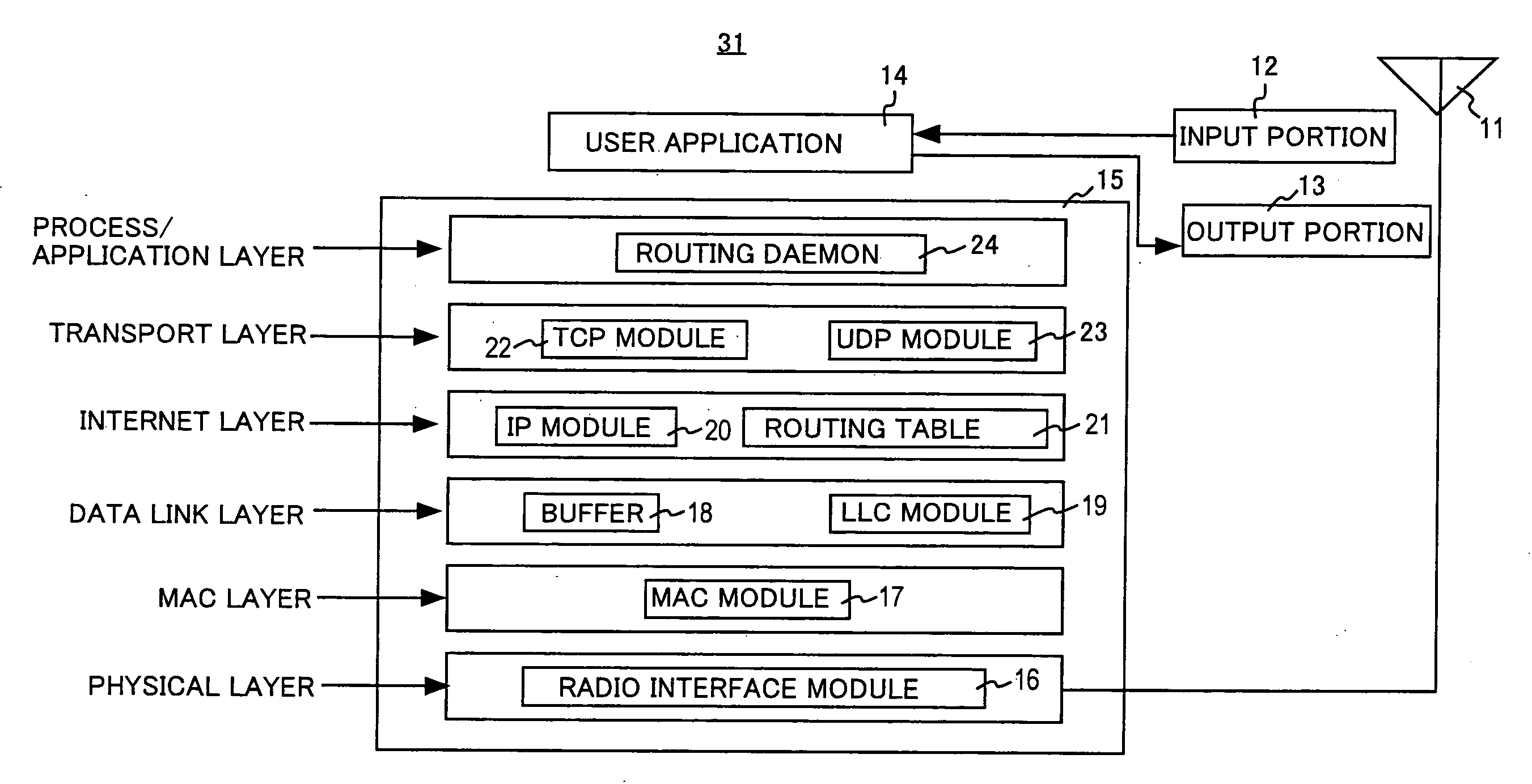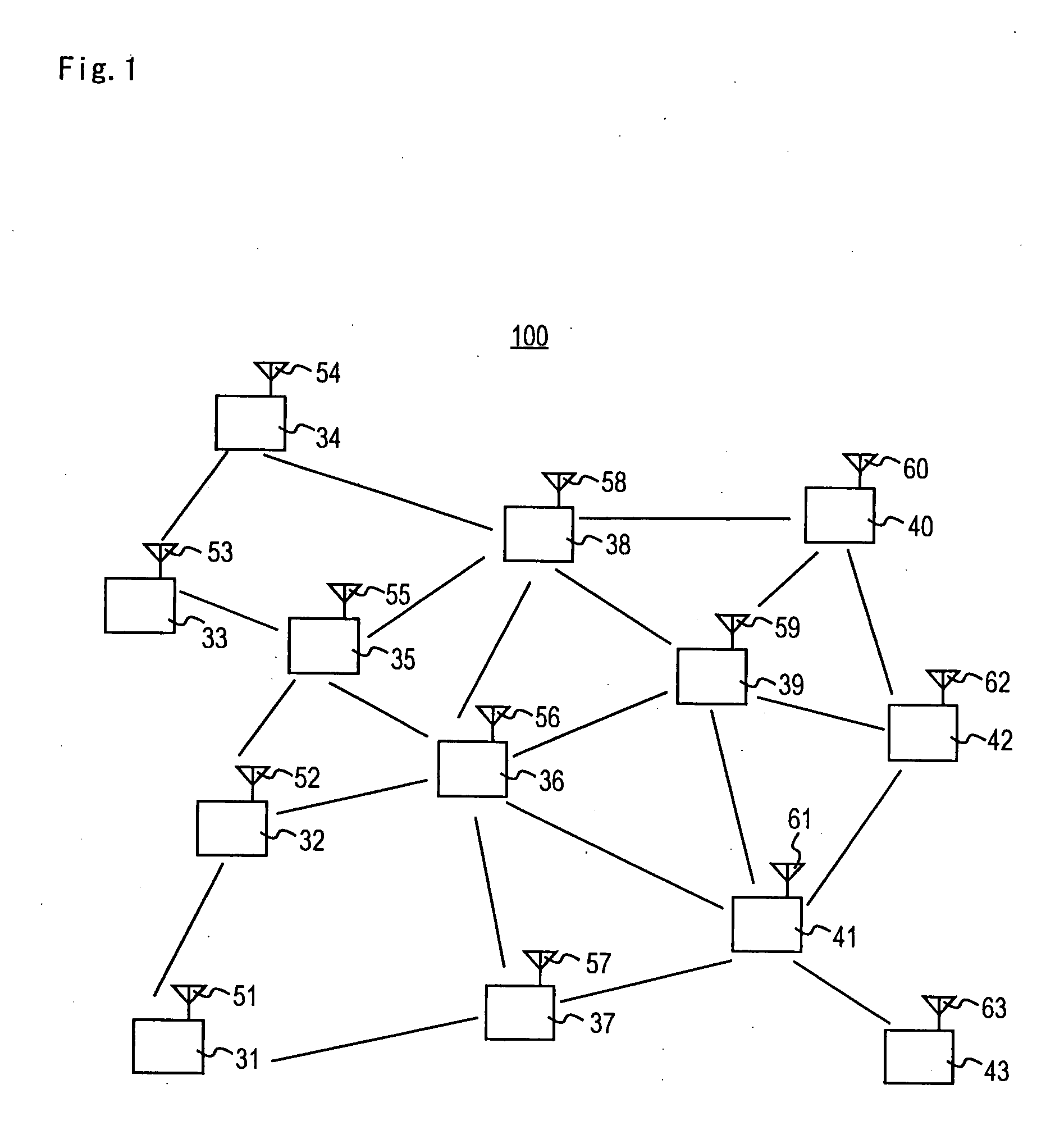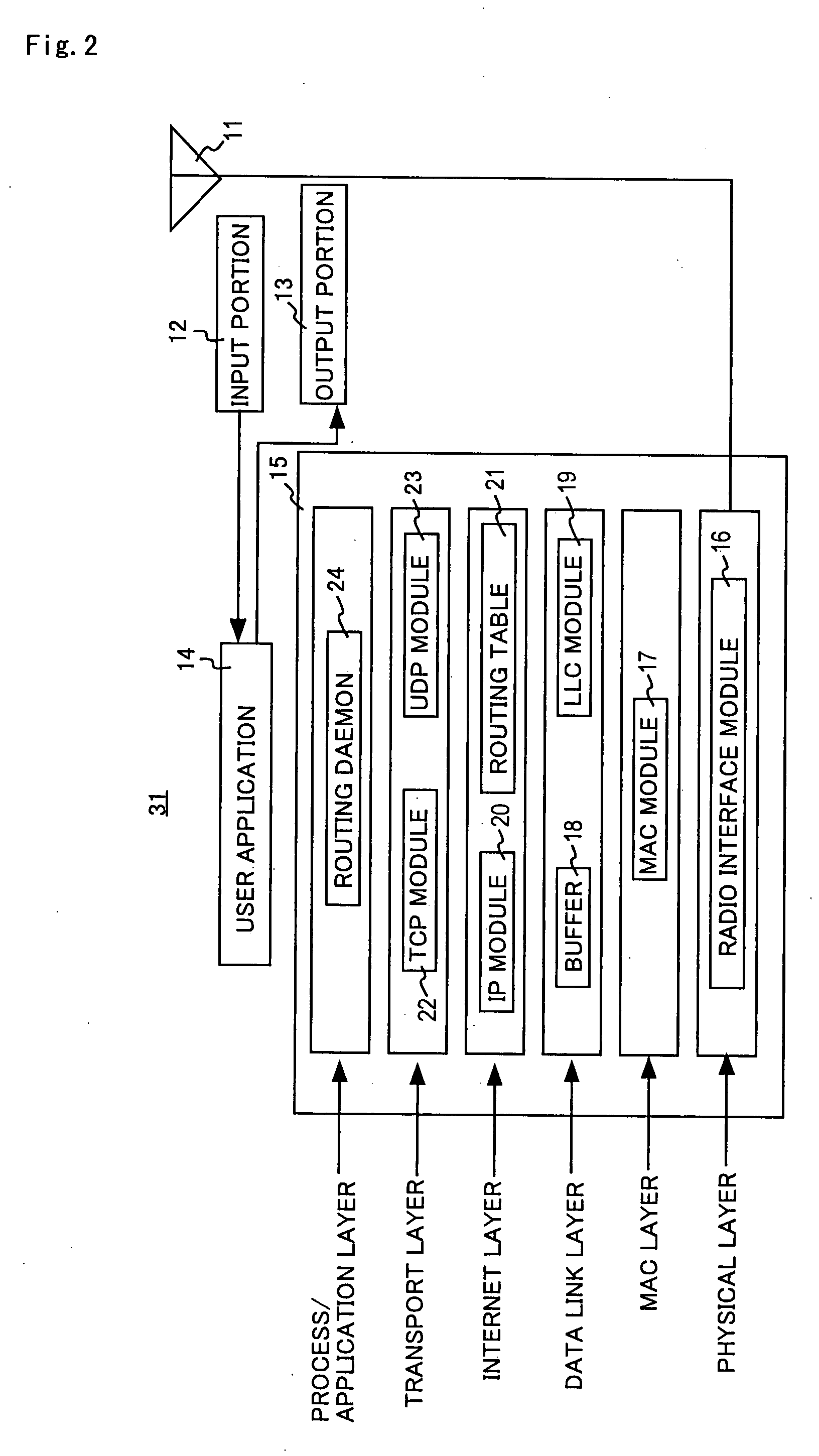Radio Device
- Summary
- Abstract
- Description
- Claims
- Application Information
AI Technical Summary
Benefits of technology
Problems solved by technology
Method used
Image
Examples
first embodiment
[0081]FIG. 2 is a schematic block diagram of the configuration of the radio device 31 shown in FIG. 1 according to a first embodiment of the invention. The radio device 31 includes an antenna 11, an input portion 12, an output portion 13, a user application 14, and a communication control unit 15.
[0082]The antenna 11 corresponds to each of the antennas 51 to 63 shown in FIG. 1. The antenna 11 receives data from another radio device through a radio communication space, outputs the received data to the communication control unit 15, and transmits data from the communication control unit 15 to another radio device through the radio communication space.
[0083]The input portion 12 accepts a message and the destination of data input by the operator of the radio device 1 and outputs the accepted message and destination to the user application 14. The output portion 13 displays the message according to control by the user application 14.
[0084]The user application 14 produces data based on th...
second embodiment
[0246]FIG. 22 is a schematic block diagram showing a configuration of the radio device 31 in FIG. 1 according to a second embodiment of the invention. The radio device 31A includes a communication control unit 15A in place of the communication control unit 15 of the radio device 31 in FIG. 2 and the other parts is the same as that of the radio device 31.
[0247]The communication control unit 15A includes a routing daemon 24A in place of the routing daemon 24 of the communication control unit 15 shown in FIG. 2 and the other parts is the same as that of the communication control unit 15.
[0248]The routing daemon 24A determines a threshold WIth_HH used to register a radio device that has transmitted a Hello packet as an adjacent radio device in a neighbor list and a threshold WIth_LL used to remove a radio device that has transmitted a Hello packet from the neighbor list according to a method that will be described. The routing daemon 24A registers a radio device that has transmitted a H...
PUM
 Login to View More
Login to View More Abstract
Description
Claims
Application Information
 Login to View More
Login to View More - R&D Engineer
- R&D Manager
- IP Professional
- Industry Leading Data Capabilities
- Powerful AI technology
- Patent DNA Extraction
Browse by: Latest US Patents, China's latest patents, Technical Efficacy Thesaurus, Application Domain, Technology Topic, Popular Technical Reports.
© 2024 PatSnap. All rights reserved.Legal|Privacy policy|Modern Slavery Act Transparency Statement|Sitemap|About US| Contact US: help@patsnap.com










